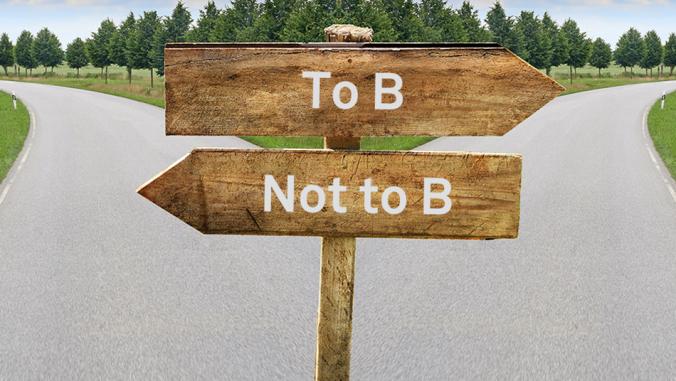How Walmart Became a Force for Nature
<p>A new book offers the first in-depth look at the many overlapping forces that drove the green makeover of Walmart -- and what that makeover means for the world.</p>

Business is business, they say, but I'm often reminded that business is personal, too.
Back in about 2005, Lee Scott, who was then CEO of Walmart, traveled with Fred Krupp, the president of the Environmental Defense Fund, to the top of Mount Washington, to visit a weather research station and meet with environmental scientists, including Steve Hamburg, who's now the chief scientist at EDF. On their way, Scott stopped to visit with a New Hampshire maple farmer who told him that warmer weather was threatening the maple syrup business his family had operated for four generations. By the end of the trip, Scott had seen the impacts of climate change for himself -- and seen how they could evolve into business issues for Walmart.
Mike Duke, Scott's successor as CEO, took a climate-change field trip of his own a few years later. He spent the night in an ice hotel on a glacier in Sweden, where he heard about the impact of climate change on the Arctic. A doubter before then, he was convinced. Meanwhile, another Walmart exec went to Turkey to meet with cotton farmers, visiting a conventional farm — where cotton plants are intensively treated with herbicides and pesticides — and an organic farm where workers and the land were treated better.
 These trips were arranged by a former river rafting guide named Jib Ellison, whose consulting firm, BluSkye, has guided Walmart on its remarkable journey towards sustainability. A colorful character -- he once arranged rafting trips with Americans and Russians to help ease Cold War tensions -- Ellison is the hero of a lively new book, Force of Nature: The Unlikely Story of Wal-Mart's Green Revolution, by Edward Humes, an award-winning journalist. It's the first book about the greening of Walmart, and a valuable one, particularly for its insights into array of overlapping forces that drove the makeover of Walmart.
These trips were arranged by a former river rafting guide named Jib Ellison, whose consulting firm, BluSkye, has guided Walmart on its remarkable journey towards sustainability. A colorful character -- he once arranged rafting trips with Americans and Russians to help ease Cold War tensions -- Ellison is the hero of a lively new book, Force of Nature: The Unlikely Story of Wal-Mart's Green Revolution, by Edward Humes, an award-winning journalist. It's the first book about the greening of Walmart, and a valuable one, particularly for its insights into array of overlapping forces that drove the makeover of Walmart.
About those field trips, for example, Humes writes that the WMT execs
... returned home -- as Ellison had planned and hope -- moved by what (they) had seen, felt and heard. As never before, Wal-Mart's leaders had seen the face of climate change, pesticides and air pollution -- and it was the weathered face of a maple farmer, it was the vanishing snow lines of ancient glaciers, it was the clothing and skin of children dusky from pesticide residue. "You don't get that in a briefing paper," Ellison remarked to Scott. The CEO nodded.
Now, business isn't just personal, of course. Scott began exploring sustainability back in the mid-2000s because Walmart had s terrible reputation, particularly in places (like Chicago and LA) where it had no stores and wanted to open some. Once Ellison got in the door, thanks to his friendship with Peter Seligmann, the founder of Conservation International, who introduced him to Rob Walton, Walmart's chairman, he was able to show Scott that the company could save money by going green.
This argument, Humes shows, quickly became the primary driver of the sustainability campaign inside at Walmart : Plain and simple, the company's leaders came to understand that pollution is another just word for waste. WMT's culture hates nothing as much as waste. A cleaner, greener, more efficient Walmart, the executives saw, would be able to deliver low prices to customers and profitable growth to shareholders.
Humes ticks off a series of quick wins at Walmart that are now familiar to those who have followed the company: Smaller packages for toy trucks and laundry detergent, auxiliary power units for trucks in the company fleet, LED lighting and greener refrigerants in the company's stores. The fact that these are oft-told tales points to a weakness of Force of Nature: It's not a deeply reported book, and thus delivers few surprises and suffers from a couple of blind spots.
Because Ellison is obviously the key source, others who played big roles in changing Walmart -- in particular Leslie Dach -- are overlooked. Dach, a former environmental lobbyist, Democratic Party operative and PR exec who is now Walmart's executive vice president, gets a laudatory paragraph, but the story of how this quintessential outsider (a green, liberal, urban Jew) become a force to be reckoned with in Bentonville should have been told in Force of Nature. Working closely with Scott, Dach led a broader cultural revolution at Walmart which is today is less insular, less defensive, more open and collaborative company than it used to be. Environmental Defense Fund has had two full-time people in Bentonville for years, but they barely show up in the book.
Still, Force of Nature gets the story right, for the most part. Humes does a great job of explaining Walmart's reach and influence, while pointing to the limits of a sustainability program that, to this day, remains driven largely by eco-efficiency. As he writes:
... Wal-Mart, as long as it looks anything like the Wal-Mart we know today, is never going to be truly green or wholly sustainable. Because any gains it makes in efficiency, conservation and clean energy will be matched by the continued growth of a company that, since the day Jib Ellison arrived in Bentonville in 2004, has grown 43 percent to $408 billion in annual revenue in 2010.
This needs to be the next step on Walmart's journey -- to figure out, with the help of its suppliers and partners, how growth and consumption can be aligned with sustainability. If it can do that, Walmart will become a force of nature in every sense of the word.





